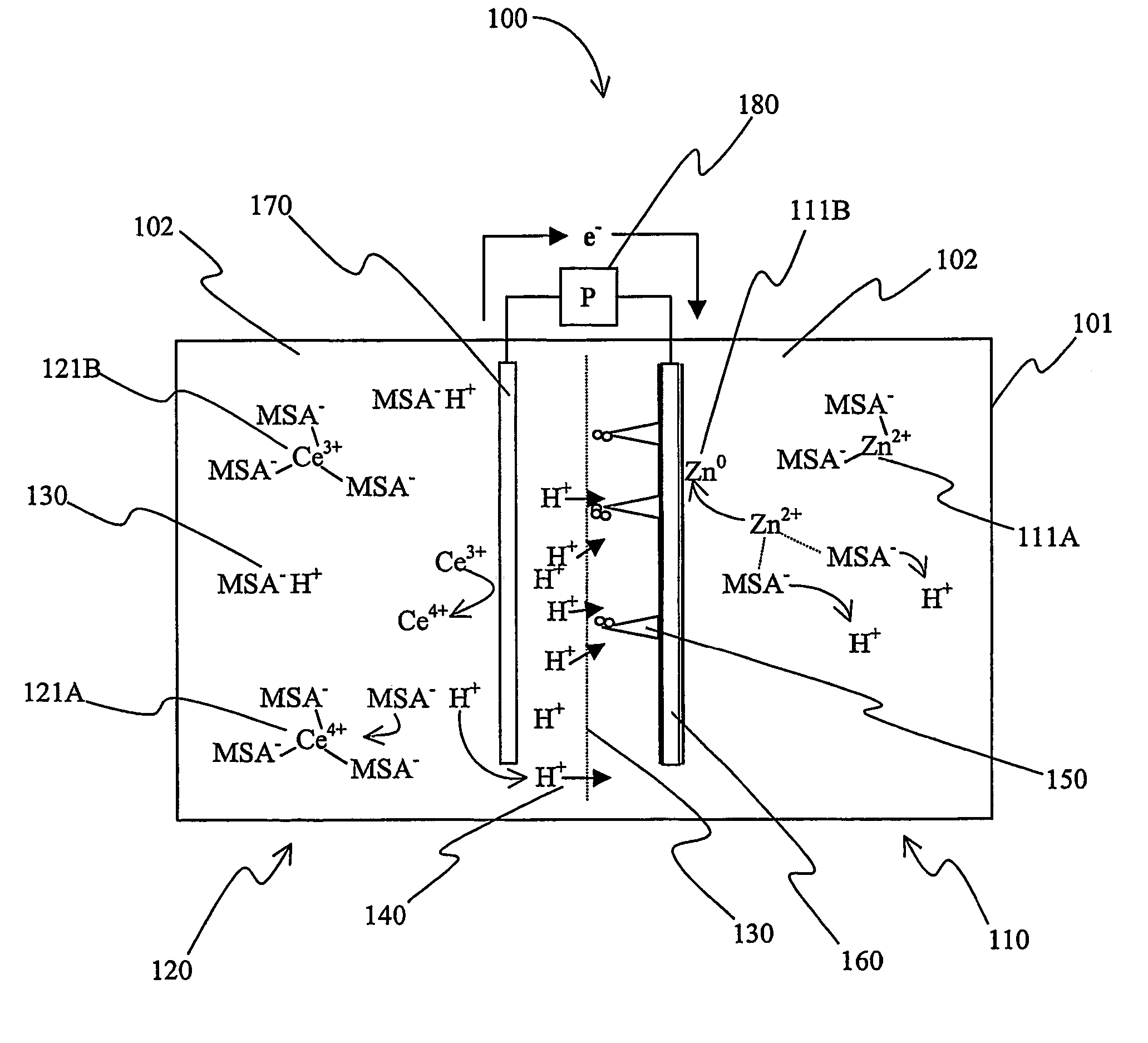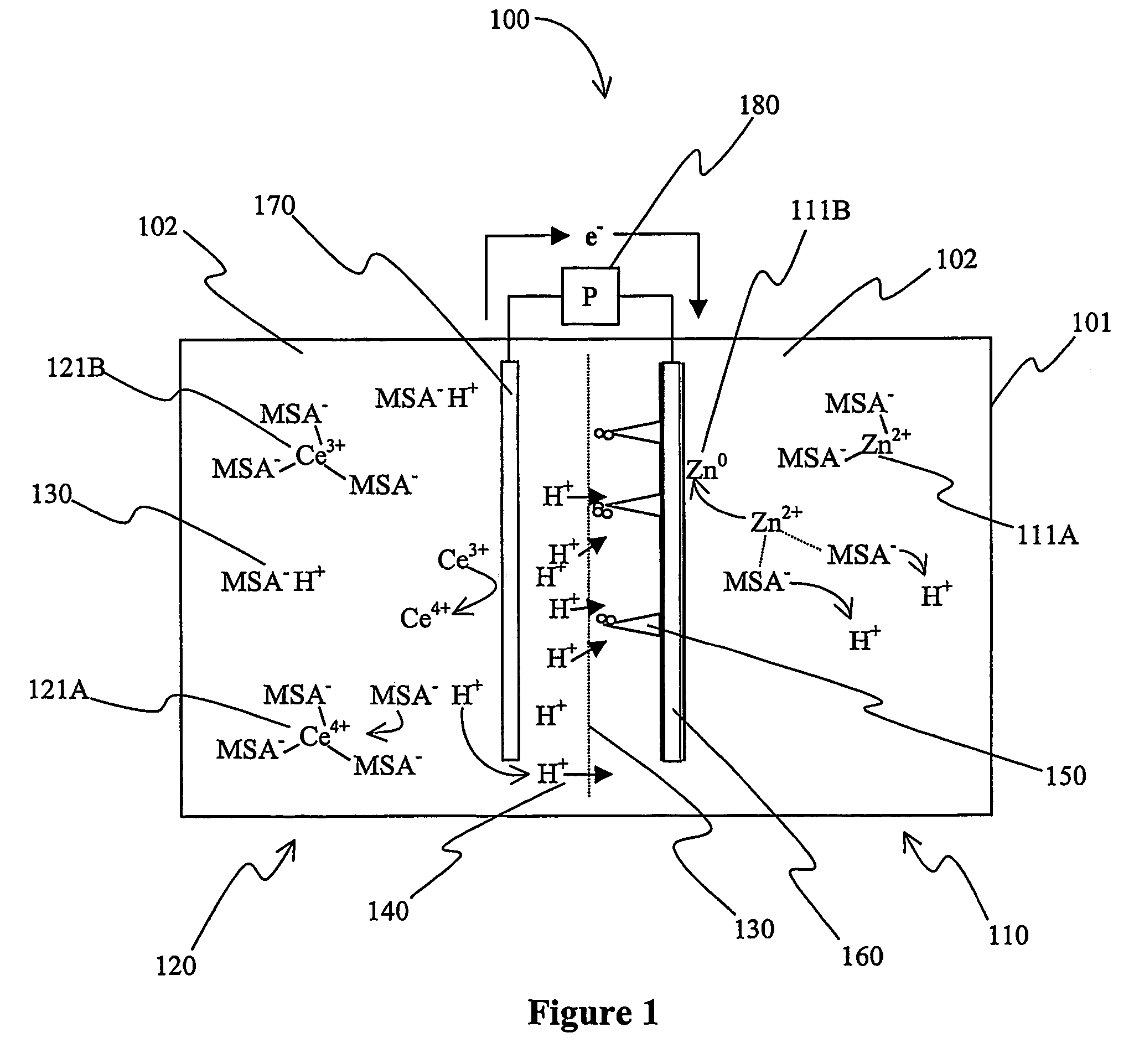Secondary battery with autolytic dendrites
a secondary battery and dendrite technology, applied in the field of batteries, can solve the problems of battery cycle life, production and disposal, and the similar poor cycle life of the zinc electrode, and achieve the effect of increasing the concentration of h+
- Summary
- Abstract
- Description
- Claims
- Application Information
AI Technical Summary
Benefits of technology
Problems solved by technology
Method used
Image
Examples
Embodiment Construction
[0017]The inventors have discovered that a battery with a zinc-containing acid electrolyte can be manufactured such that dendrites growing from the anode during charging will disintegrate proximal to the separator of the battery.
[0018]As used herein, the term “anode” refers to the negative electrode of a battery (i.e., the electrode where oxidation occurs) during discharge of the battery. Thus, the term “anode compartment” refers to the battery compartment that includes the anode, and the term “anolyte” refers to the electrolyte in the anode compartment. Similarly, the term “cathode” refers to the positive electrode of a battery (i.e., the electrode where reduction occurs) during discharge of the battery. Thus, the term “cathode compartment” refers to the battery compartment that includes the cathode, and the term “catholyte” refers to the electrolyte in the cathode compartment.
[0019]As also used herein, the term “redox pair” is interchangeably used with the term “redox couple” and ...
PUM
| Property | Measurement | Unit |
|---|---|---|
| current density | aaaaa | aaaaa |
| open circuit cell voltage | aaaaa | aaaaa |
| current efficiency | aaaaa | aaaaa |
Abstract
Description
Claims
Application Information
 Login to View More
Login to View More - R&D
- Intellectual Property
- Life Sciences
- Materials
- Tech Scout
- Unparalleled Data Quality
- Higher Quality Content
- 60% Fewer Hallucinations
Browse by: Latest US Patents, China's latest patents, Technical Efficacy Thesaurus, Application Domain, Technology Topic, Popular Technical Reports.
© 2025 PatSnap. All rights reserved.Legal|Privacy policy|Modern Slavery Act Transparency Statement|Sitemap|About US| Contact US: help@patsnap.com


